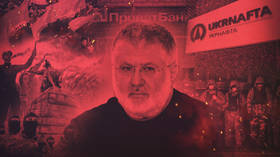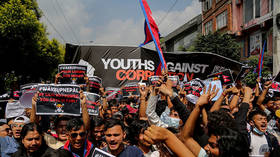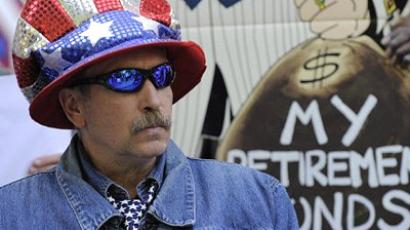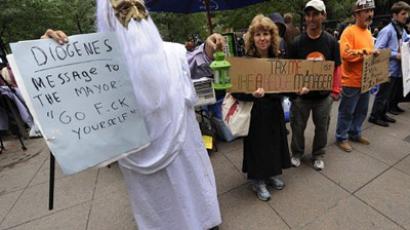Message mocked: US media ridicule OWS
One of the major grievances uniting protesters across the US is anger at the government for putting corporate welfare above that of citizens. Not that you would pick that up by watching much of America's mainstream media.
Activists are getting creative to get that point across, and their discontent is loud and graphic. Thousands of Americans have resorted to banners and t-shirts to send out a message of frustration with what they see as the government acting on behalf of big corporations rather than the people – a message the protesters say their media are failing to deliver.“About the media – it feels like these kinds of events don’t deserve coverage,” says Kevin Zeese, an anti-corporate protester. “Sometimes all you get is one press photograph, so when you design these [banners and t-shirts] it is very important for the message to be seen.”Those simple, oftentimes hand-written messages that people carry on their chests have repeatedly been subject to mockery: “Various groups emboldened to cheer the end of he greatest system known to man and replace it with what? Who cares? Let’s nap.” Or: “The protesters on Wall Street are mindless… When you ask people on Wall Street what they want, they don’t know.”It seems that the main criticism of the protesters being leveled by the American media is that they do not all have a degree in economics and finance, and are not able to explain their grievances in the language of the professional economist.“The hoax that took place over the last 30 years with regards to national debt and debt within the system generally – all of these things are very complicated and difficult for the general public to understand, and people in the media and people on Wall Street like it that way, because if you don’t understand it, you don’t get what happened,” financial analyst Karl Denninger explains.“But the American people know that they’ve gotten hosed: they’ve lost their jobs, they’ve seen them go offshore to China, they’ve lost their houses, they saw a huge run-up in home prices, then it collapsed,” Denninger continues. “And people are saying: ‘You know what? I know I’ve gotten screwed by all of this but I don’t know how I got screwed.”But the Americans currently taking to the streets are looking to do much more than express themselves by means of motivational t-shirts and banners which, as graphic as they are, hardly convey the full message of the movement.The demonstrators are now circulating their own paper now – the Occupied Wall Street Journal – which details what they are unhappy with and makes it clear that they are not rooting for one particular party. It also warns against “political machines and their PR slicks taking control of the protest message.”One word used to describe the mood of these protests from the very beginning is frustration. On their t-shirts, on cardboard, on the backs of pizza boxes, people are expressing that frustration. But as the movement grows, the ways of getting their message across is also maturing.















